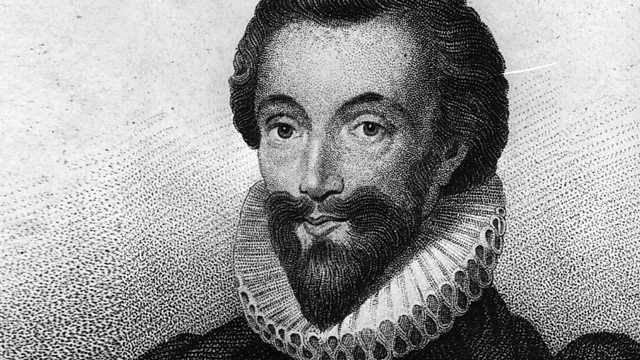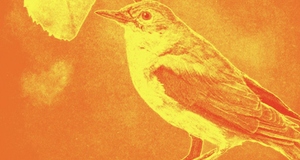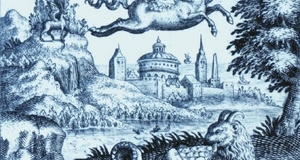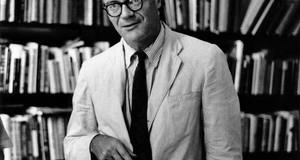The Sexual and the Spiritual in John Donne's Poetry: Exploring "The Extasie" and its Analogues
By
2014, Vol. 6 No. 11 | pg. 1/2 | » AbstractThis paper looks at the poet John Donne’s method of incorporating sexual imagery into religious and spiritual contexts. The main features of Donne’s technique arise from his notion of ecstasy. Donne’s ecstasy describes how the souls of two lovers leave their bodies during their physical union and mix together before returning to their original bodies. This experience purifies each of the lovers and grants them spiritual fulfillment. Writers such as Marsilio Ficino, St. Teresa of Avila, and others have proposed similar ideas regarding the transformative experience that sex has on the soul. These ideas directly collide with the beliefs of some schools of thought, like Stoicism, where sensual experiences are disfavored compared to the power of order and reason in discovering spiritual truth. A discussion of the various perspectives on ecstasy is followed by a brief examination of how the notion especially pervades three of Donne’s works: “The Extasie,” “Holy Sonnet XIV,” and “The Good-Morrow.” As a metaphysical poet, John Donne uses imaginative and ironic conceits in his poetry which often address topics like love and religion. Bozanich (1975) explains how Donne as an expert metaphysical poet frequently treated themes such as the union of binaries: In what may now be regarded as the classic era in the study of the Metaphysicals, it was concluded that the distinguishing mark of that school and, above all, of its master Donne was a concern with the problem of the-one-and-the-many, an obsession with unity, a preoccupation with ‘the relatedness of things.’ Donne’s poetry, in this view, is characterized by a search for the means by which such seemingly opposed elements as body and soul, male and female, the earthly and the divine may be subsumed into unity. (p. 274) Donne has a habit of combining sexual and spiritual imagery, as can be seen in a few of his Holy Sonnets and other poems like “The Extasie.” The juxtaposition of both sexual and spiritual language may seem strange at first, but this pairing actually makes sense once the reader is familiar with Donne’s concept of ecstasy.“Art is the most passionate orgy within man’s grasp.” — John Donne While some may consider John Donne’s technique of pairing sexual language with spiritual subject matter as paradoxical, one may argue that this technique serves a logical purpose in illustrating Donne’s notion of ecstasy, which describes sexual gratification and spiritual fulfillment as two concurring phenomena.
John Donne (1572 - 1631) was an English poet of the metaphysical school, much of whose now highly regarded poetry was published posthumously. Interest and admiration of Donne's work was especially reignited by later poets such as T.S. Eliot and William Butler Yeats. This paper not only explores Donne’s ideas, but also the ideas of other figures who share similar thoughts on the concept of ecstasy. After discussing Donne’s notion of ecstasy, I show how these ideas are conveyed in Donne’s poetry by looking at three examples: “The Extasie,” “Holy Sonnet XIV,” and “The Good-Morrow.” Mitchell (1968) gives a concise overview of Donne’s notion of ecstasy: The inward union of the body and soul of man is achieved through the outward union of man and woman. Body and soul remain at odds within a person until he loves another person, for the reason that his soul realizes and knows itself through the experience of love, love being a state in which flesh, become subordinate or servant to the psyche, terminates its suppression of soul. During love, the soul is ecstatically freed from the body, transplanted into a richer soil, which is the soul of the other person, and thereby gains new strength and knowledge about itself in relation to its body. When at the termination of love’s ecstasy, the soul repairs to its body, the self is no longer a merely carnal or physical being, but a synthesis permitted by love’s potentiation of the soul. (p. 91) Donne’s notion of ecstasy may prove to be morally troublesome for traditional philosophies such as Stoicism. The Stoics believe the highest virtues are attained through self-control and avoidance of purely sensual experiences. They believe truth and beauty can be found through reason alone. To suggest to the Stoics that the pleasure of sexual experience can lead to spiritual truth would be to undermine their view of virtue. According to Huntington (1977), the scholar Marsilio Ficino discusses a theory of virtue that greatly resembles Donne’s concept of ecstasy and challenges Stoic values, “The central requirement of the theory, that one give oneself up to the attraction of beauty rather than remain under the strict control of reason, involves a crucial violation of the Stoic moral ideal” (p. 41). Ficino’s theory permits “forms of sensual love which, however much they alarm the Stoic moralist, if pursued with the proper spirit and with the proper preparation have philosophic value” (Huntington, 1977, p. 42). Cirillo (1969) supports the notion that both Donne and Ficino share a theory where a realm of spiritual possibilities exists within the experience of sexual union: Through mutual love, two lovers achieve that perfect fusion of souls that makes them one—neither he nor she, but both he and she in one spiritual union. This theory is propounded in the writings of Ficino . . . and it suggests that the moment of union is preceded by ecstasy, or a love-death in which the two lovers are said to be dead, to die to life that they may live to love . . . This concept of union may be seen as the basis of many of Donne’s Songs and Sonnets. (p. 81) Sexual union is seen as a path to spiritual harmony because of the relationship dynamic that has been established between the body and the soul. Along with Donne and Ficino, another historical figure who has been known to promote similar ideas regarding the ecstasy of the body/soul is Saint Teresa of Avila. McCann (1954) describes the similarities between the saint’s writings and Donne’s writings: An examination of the two works . . . reveals not only some of the differences one would expect, but a surprising amount of agreement about the position of bodies and the movements of souls during a contorted ecstasy. That Teresa was famous for the violence of her ecstasies is evidenced by Bernini’s statue of her in the throes of a spasm. There is no evidence in Donne’s poem, or in his other works, that he himself had experienced an ecstasy. Yet there is a pronounced similarity in the reactions of two strong-minded individuals—separated by sex, history, and national culture but curiously alike in temperament—to a single startling experience. (p. 125) The remarkable correspondence between Donne’s ideas and Teresa’s writings is interesting as both of them had significant relationships with the Church and Christianity throughout their lives.Continued on Next Page » Suggested Reading from Inquiries Journal
Inquiries Journal provides undergraduate and graduate students around the world a platform for the wide dissemination of academic work over a range of core disciplines. Representing the work of students from hundreds of institutions around the globe, Inquiries Journal's large database of academic articles is completely free. Learn more | Blog | Submit Latest in Literature |



















